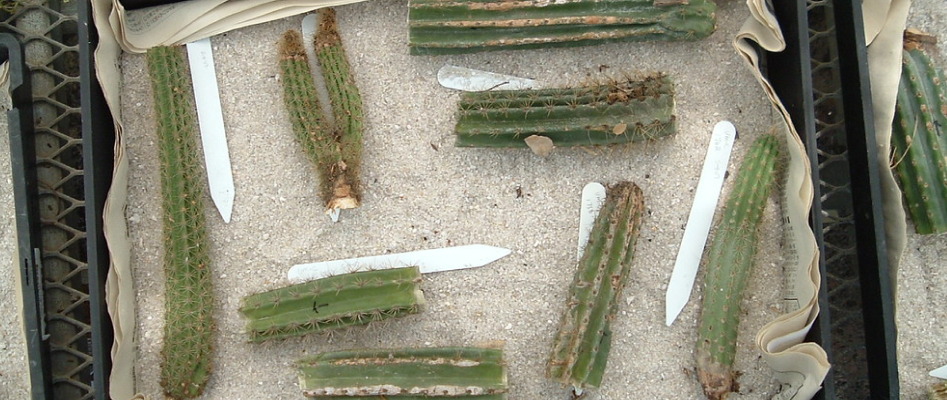CPC Best Plant Conservation Practices
to Support Species Survival in the Wild
to Support Species Survival in the Wild

US endangered Pilosocereus robinii cuttings hardening before transplant to soil. This technique minimizes transmission of pathogens from soil to open cuts. Photo by Joyce Maschinski.
For long-lived species that produce seeds out of reach in time and space or for vines or herbaceous species, cuttings may be an easy vegetative propagation method that can be used to obtain material.
Plan to collect plant cuttings at a season when tissue is not overly soft or hard.
Sterilize tools before and after taking a cutting.
Protect plant cuttings while transporting from field to nursery.
Identify the location of buds and nodes so that you can orient your plant cuttings.
Trim cuttings from end distal to shoot tip such that there are 3 to 4 nodes on a cutting.
Reduce opportunities for contamination.
Encourage root growth from stem cuttings.
Seek the Goldilocks condition – not overly wet and not too dry.
Maintain labels on cuttings to distinguish different maternal lines throughout the propagation process.
For more information, see Missouri Botanical Garden’s guide to propagation by cuttings.
 Equipment List
Equipment List
For plants where cutting is not possible, division is a simple vegetative propagation method that can also help with plant conservation.
For plants with specialized storage roots, (rhizomes, tubers or bulbs), or species with adventitious bulbs, pull sections apart and transplant smaller units into individual pots.
For plants with massive root systems (grasses, Carex, Juncus, clonal species), break or pull whole portions of the mat apart. Some are so tough that it is possible to saw them apart.
Maintain labels on propagules to distinguish different maternal lines throughout the propagation process.
 Equipment List
Equipment List
The Center for Plant Conservation has several resources to help you stay educated on the best practices of plant conservation. If you want to learn more about protecting plants, or connecting with plant professionals, we are here to help!